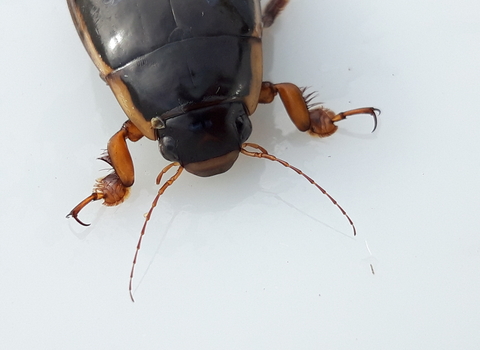
King diving beetle © Henry Stanier
King diving beetle
Britain's largest 'diving beetle' is an impressive creature, though it's not easy to find.
Scientific name
Dytiscus dimidiatusWhen to see
All yearSpecies information
About
The king diving beetle is a fitting name for this enormous aquatic insect, which has golden edges to its black body. It is the largest 'diving beetle' in Britain, reaching a length of 3.8cm. Diving beetles belong to the family Dytiscidae. They are streamlined beetles suited to swimming and are predators of other aquatic creatures.In Britain, king diving beetles are fenland specialists, found in lowland drains, ditches and ponds. They seem to have a preference for partially shaded ditches. They are fairly rare beetles, found only in a few areas of England and Wales.
